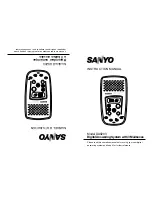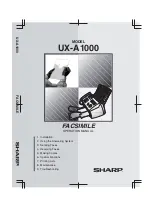
DISASSEMBLY OF THE BRUSHES
(Only cylindrical brush models)
•Pull the handle (4) as illustrated and release the side bar.
•Unscrew the wing nut (1).
•Rotate the spring (2)
•Take off the pins (3).
•Lift the machine and remove the brushes.
•Reassemble everything again repeating the above-mentioned operations inversely.
Be careful not to invert the brushes (white brush in the front part and the blue one in
the rear part).
BRUSH REMOVAL WITH AUTOMATICCOUPLING-RELEASE
(Optional)•Turn the brushes switch off and press the brushes/brush release button
until the brushes release.
INSUFFICIENT WATER TO THE BRUSHES
•Check that the valve is open (signal lamp on).
•Check that there is water in the solution tank.
MACHINE DOES NOT CLEAN WELL
•Check the condition of the brushes and replace if necessary (brushes must be
replaced when bristles are 15 mm. high).
•Check that brush pressure is sufficient. Increase as necessary using lever (1).
•Use another type of brush rather than the standard brush. We recommend, to clean
floors with exceptionally difficult dirt, the use of special brushes that are supplied on
request and according to your specific needs (see "BRUSH SELECTION AND USE"
below).
SQUEEGEE DOES NOT DRY PERFECTLY
•Check that the squeegee is clean.
•Check all adjustments (see "PREPARING THEMACHINE").
•Clean the entire aspiration unit (see "DAILYMAINTENANCE").
•Replace worn rubbers.
SUCTION MOTOR DOES NOT WORK
•Check if the suction motor switch (1) is ON. Check if the main key switch is ON.
•Check if the recovery tank is full.
TOO MUCH FOAM IS FORMING
Check that low-foam detergent is used. Add, if necessary, a small quantity of anti-
foam liquid to the recovery tank. Remember that more foam is generated when the
floor to be cleaned is not very dirty. In this case use a more diluted detergent
solution.
































